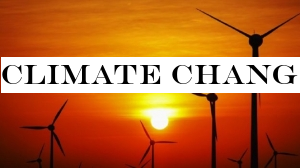Music
Trailers
DailyVideos
India
Pakistan
Afghanistan
Bangladesh
Srilanka
Nepal
Thailand
StockMarket
Business
Technology
Startup
Trending Videos
Coupons
Football
Search
Download App in Playstore
Download App
Best Collections
Srilanka

Arrangements are being made to conduct the 69th annual Esala Maha Perahera Festival of the Bellanwila Rajamaha Vihara on a grand scale.The festival has already been commenced from August 4 with the opening of a memorial hall to commemorate pioneer of the Bellanwila Esala festival, the late Chief Incumbent, Ven. Bellanwila Sri Somaratana Nayake Thera and the late Chief Incumbent of the Bellanwila Temple, Ven. Prof. Bellanwila Wimalaratana Anunayake Thera at the temple premises.
- Details
- Category: Srilanka
Read more: Bellanwila Kumbal Perahera tomorrow
Write comment (97 Comments)
GALLE, THURSDAY: Sri Lanka batsmen gave a reckless display of batting to hand the initiative back to New Zealand after their bowlers had done a splendid job in the morning session to capture the remaining five Kiwi wickets for 46 runs and bowl them out for 249 in the first Test played at the Galle International Cricket Stadium yesterday.Sri Lanka in their turn were strongly placed at one stage to take a handy first innings lead which could be vital on a wicket that is gradually beginning to deteriorate and favour the slow bowlers when they were 143-3, but Kusal Mendis who played a restrained knock of 53 attempted an extravagant drive off the penultimate ball before tea to be caught at slip to spark off an unnecessary middle order collapse that saw Sri Lanka end the second day on 227 for seven wickets.New Zealand spinner Ajaz Patel celebrates with his captain Kane Williamson the dismissal of Kusal Mendis. & AFP Niroshan Dickwella and Suranga Lakmal restored some sanity into the batting later in the day by indulging in a useful unbroken 66-run partnership off 145 balls for the eighth wicket, that saw Sri Lanka trail New Zealand by 22 runs going into the third day today.
Lakmal who had a good day with the ball claiming all four wickets to fall to the bowlers yesterday & the other was a run out (Tim Southee), looked more accomplished than some of his specialist batsmen playing sensible cricket to remain unbeaten on 28 scored off 79 balls inclusive of two fours and a six.
Dickwella playing his usual game of sweeps and reverse sweeps survived to be on 39 not out off 74 balls with a solitary boundary.
Mendis& wicket opened the floodgates for New Zealand when nothing was happening as the batsmen who followed him Kusal Perera (1), Dhananjaya de Silva (5) and eventually Angelo Mathews (50) all perished to poor shots to bring the Kiwis back into the game.
Mathews looked in good shape to play another big knock against New Zealand having scored 83, 120 not out, 33 not out and 22 not out against them in his last four Test innings a total of 330 for once out. But soon after completing his half century he too perished like Mendis before him.
Sri Lanka lost five wickets for 18 runs either side of tea in a period of batting madness which they may have to regret if New Zealand set them a stiff target to chase in the fourth innings on a turning track.
Having to bat last, it was imperative that Sri Lanka got a handy first innings lead, but it was not to be as left-arm spinner Ajaz Patel followed up his five-for in the 3-day practice game with another impressive five-wicket haul. When play resumed yesterday Lakmal sent back both overnight batsmen Ross Taylor and Mitchell Santner within the space of 16 balls. Taylor slashed at the first ball he received for the day and edged a catch behind the wicket to be dismissed without adding to his first day score of 86 and Santner was out not offering a shot to a ball that seamed back to catch him plumb in front for 13.
Southee committed hara-kiri and ran himself out needlessly for 14 before Lakmal returned to clean up the tail by having Trent Boult caught in the deep for 18 - not before the batsman had got the ball embedded into his grille off a top edge while attempting a premeditated sweep from outside off stump, and then trapped last man Patel for a duck off successive deliveries to leave himself on the verge of a hat-trick when he bowls the first ball in the New Zealand second
- Details
- Category: Srilanka
Read more: Sri Lanka capitulate to hand initiative back to Black Caps
Write comment (95 Comments)
GALLE, THURSDAY: If Sri Lanka is to turn the first cricket Test against New Zealand in their favour a lot will depend on Suranga Lakmal who is responsible so far for keeping his team in the game without allowing it to drift too much towards the opposition.
When play began yesterday with New Zealand resuming at 203-5 and looking to build on it, it was Lakmal who shut the door on the visitors by sending back both overnight batsmen Ross Taylor and Mitchell Santner in his opening spell and then came back for a second spell to clean up the tail taking the last two wickets off successive deliveries to dismiss New Zealand for 249 and end with figures of 4 for 29 off 15.2 overs.
Then when Sri Lanka suffered a sudden middle order slump sliding from 143-2 to 161-7 and were in danger of conceding a big first innings lead, Lakmal in the company of Niroshan Dickwella dug in to deprive the Black Caps of any further success by putting together a useful unbroken partnership of 66 for the eighth wicket that saw the home team end the second day at 227-7, 22 runs behind New Zealand.
&Our first target is to see that we reach their total and then think beyond. After the two of us, there are bowlers coming into bat. Therefore, we need to get as many runs as possible. However, it's not easy to bat on this wicket because it turns a lot. Our main aim is to gain a lead,& said Lakmal at the end of the day.
&Batting with Dikka he tells me many things but one cannot keep everything in mind. So I told him that I will take care of myself and stay without giving away my wicket, you better go for your shots and score, without taking a risk. That was the only possible thing at the time. That's how we built the partnership,& he said.
Lakmal is renowned for his prowess with the new ball but of late he has also improved in his batting and has a Test highest score of 42.
&So many people have told me that I can bat but I don&t apply myself to it. So during the last one and half years, I have been working with the batting coach and now I know I can contribute something to the team with the bat,& said Lakmal
&Possibly, they'll take the new ball tomorrow morning. Therefore, it's a challenge for us to face it. If we can survive the first 10 overs, then it's easy to go on from there. Even facing Ajaz Patel, Dikka and I were telling each other that to play down the good ball and to score off the loose ones because, if you stick around without going for your shots, you might get out to a good ball,& he said.
Lakmal who went wicketless on the first day picked up four of the five wickets to fall yesterday. &I was looking at how I was bowling and I realized that I was little too away from the line I should have been bowling. So I had a chat with the coach and set a plan in the morning. The wicket looked a bit slow and we thought of bowling at the stumps. That plan worked well in the morning session.&
The four wickets he took yesterday brought him closer to the 150 Test wickets mark and Lakmal who presently has 141 wickets said, &I have done a lot of hard work and I am second only to Vaasy (Chaminda Vaas) among the fast bowlers. My aim is to get 200 to 250 wickets.&
Having claimed the last two New Zealand wickets off successive balls Lakmal will be on a hat-trick when he bowls the first ball in the New Zealand second innings.
New Zealandleft-arm spinner Ajaz Patel who ended the second day taking five wickets for 76 said his success was all about rhythm.&As a spinner itall about rhythm. Once you get into that rhythm you can build on that and drag it out as much as possible,& said Patel.
&On surfaces like this that offer you something, you&ve got to stay patient and ask good questions from the batsman. We know Sri Lankans are good players of spin, so you&ve got to respect that and make sure you put balls in good areas for long periods.
&Once guys are set it can be difficult to get them out. Both teams had in-out fields once a partnership was set which means you had attacking options, but you were still covering the boundaries. I think you&ve got to keep hanging in and play the long game. Yes, thereturn, but itslow turn. So once a batsman is set they can get an understanding of how much its going and what itdoing.&
Patel also had success against Pakistan in the UAE but he said the surfaces were different.
&In the UAE therea lot more bounce. Over here therenot so much bounce, so you try and keep the stumps in play. One of the greats, Rangana (Herath), whogot 100 wickets out here - if you see the template that he set out when bowling on this wicket, he looked to attack the sticks and keep them in play the whole time, and allow the batters to make decisions around off stump,& Patel said.
- Details
- Category: Srilanka
Read more: Suranga Lakmal the bowler and batsman
Write comment (99 Comments)
By Matt McGrath
Carbon emissions have not yet peaked in many countries the report saysGlobal efforts to tackle climate change are way off track says the UN, as it details the first rise in CO2 emissions in four years.The emissions gap report says that economic growth is responsible for a rise in 2017 while national efforts to cut carbon have faltered.To meet the goals of the Paris climate pact, the study says it's crucial that global emissions peak by 2020.But the analysis says that this is now not likely even by 2030.The report comes days before a major UN climate conference starting in Poland from 2-14 December.UK summers could be over 5C warmer by 2070Dire warning on US climate change impactsAttenborough takes seat at climate talksWhat is the emissions gap?For the last nine years, UN Environment have produced an assessment of the latest scientific studies on current and future emissions of greenhouse gases.
It highlights the difference between the level of greenhouse gas emissions that the world can sustain to keep temperatures within safe limits, with the levels that are likely based on the promises and actions taken by countries.
This year's report records the largest gap yet between where we are and where we need to be.
Why are emissions rising again?Between 2014 and 2016, global emissions of CO2 from industry and the production of energy were essentially stable while the global economy grew modestly - but in 2017 these emissions went up by 1.2% pushed along by higher GDP.
Image copyrightGETTY IMAGESImage captionWhile renewable energy sources are booming in countries like India, carbon emissions haven't yet peakedWhile the rise might seem small, it needs to be seen in context of efforts to keep global temperatures from rising by more than 1.5C, as recently outlined in a key IPCC report.
According to the UN, to keep the world below that target, global greenhouse gas emissions in 2030 would have to be 55% lower than today.
"There is still a tremendous gap between words and deeds, between the targets agreed by governments worldwide to stabilise our climate and the measures to achieve these goals," said Dr Gunnar Luderer, from the Potsdam Institute for Climate Impact Research and one of the authors of the study.
The scientists say that to tackle the gap, nations must raise their ambition five fold to meet the 1.5C goal.
Right now, the world is heading for a temperature rise of 3.2C by the end of this century the report says.
No peaking?One key aspect of the study is about the peaking of global greenhouse emissions.
The report says that peaking of emissions in 2020 is "crucial for achieving the temperature targets in the Paris agreement," but the scale of the current efforts is insufficient.
The study says that by 2030, around 57 countries representing about 60% of global emissions will have peaked. Nowhere near where the world needs to be.
Does the report point the finger at countries that are doing badly?In some ways yes. The study says that countries including Argentina, Australia, Canada, the EU (including the UK), South Korea, Saudi Arabia, South Africa and the US, are falling short of achieving their nationally determined contributions for 2030.The burning and clearing of forests in Asia contributes hugely to emissionsThree countries, Brazil, China and Japan are currently on track, while three others, India, Russia and Turkey are set to beat their targets.
The authors believe that some of these achievements may be down to setting relatively low targets for their national plans.
Is there any positive news in the report?Undoubtedly, yes.
The UN is placing great hopes in what it terms "non-state actors", meaning local, city and regional governments, businesses and higher education institutions can have major impacts on the future gap.
They estimate that, right now, more than 7,000 cities from 133 countries and 6,000 companies with at least $36 trillion in revenue have pledged to take climate action.
But the authors believe this is just scratching the surface. With over 500,000 publicly traded companies worldwide, there are many more that can take steps that cumulatively would have a significant impact on the gap.
The study says that there is the potential to cut emissions from this sector by 19 gigatonnes of CO2 equivalent per year by 2030 - that's enough to keep the world on a 2 degree path.
The future is fiscal?The report also suggests that government tax plans could be hugely important in tackling emissions.
It says that carbon taxes or carbon trading systems cover only 15% of the global carbon output, which could rise to 20% if China implements its planned market. But the report says that half of the emissions from fossil fuels are not taxed at all and only 10% are priced at a level consistent with keeping warming to 2C.
Subsidies for fossil fuels like coal will have to be phased out to meet climate targets"When governments embrace fiscal policy measures to subsidise low-emission alternatives and tax fossil fuels, they can stimulate the right investments in the energy sector and significantly reduce carbon emissions," said Jian Liu, UN Environment's chief scientist.
"If all fossil fuel subsidies were phased out, global carbon emissions could be reduced by up to 10% by 2030. Setting the right carbon price is also essential. At $70 per tonne of CO2, emission reductions of up to 40% are possible in some countries."
What happens now?This report is aimed at informing delegates to next week's key climate conference in Katowice, Poland. Negotiators will be trying to finish the rules on how to implement the rule book of the Paris agreement - but the report's authors hope it can push countries to greater levels of ambition.
"Germany and Europe could demonstrate leadership in this area by pledging complete greenhouse gas neutrality by 2050 and a clear strengthening of the emission reduction targets for 2030," said Dr Gunnar Luderer.
Climate change food calculator: What's your diet's carbon footprint?By Nassos Stylianou, Clara Guibourg and Helen Briggs
Avoiding meat and dairy products is one of the biggest ways to reduce your environmental impact, according to recent scientific studies.
Switching to a plant-based diet can help fight climate change, according to a major report by the UN's Intergovernmental Panel on Climate Change (IPCC), which says the West's high consumption of meat and dairy is fuelling global warming.
But what is the difference between beef and chicken? Does a bowl of rice produce more climate warming greenhouse gases than a plate of chips? Is wine more environmentally friendly than beer?
To find out the climate impact of what you eat and drink, choose from one of the 34 items in our calculator and pick how often you have it.
How do your food choices impact on the environment?Which food would you like? How often do you have it? Find outAll figures for each food in the calculator are global averages. If you cannot view the food calculator, click to launch the interactive content.
Design by Prina Shah, development by Felix Stephenson and Becky Rush.
Food production is responsible for a quarter of all greenhouse gas emissions, contributing to global warming, according to a University of Oxford study.
However, the researchers found that the environmental impact of different foods varies hugely.
Their findings showed that meat and other animal products are responsible for more than half of food-related greenhouse gas emissions, despite providing only a fifth of the calories we eat and drink.
Of all the products analysed in the study, beef and lamb were found to have by far the most damaging effect on the environment.
The findings echo recommendations on how individuals can lessen climate change by the Intergovernmental Panel on Climate Change (IPCC).
When it comes to our diets, the IPCC says we need to buy less meat, milk, cheese and butter - but also eat more locally sourced seasonal food, and throw less of it away.
The IPCC also recommends that we insulate homes, take trains and buses instead of planes, and use video conferencing instead of business travel.
Cutting meat and dairy products from your diet could reduce an individual's carbon footprint from food by two-thirds, according to the Oxford study, published in the journal Science.
Sign up for a weekly chat about climate change on Facebook Messenger
"What we eat is one of the most powerful drivers behind most of the world's major environmental issues, whether it's climate change or biodiversity loss," study researcher Joseph Poore told BBC News.
Changing your diet can make a big difference to your personal environmental footprint, from saving water to reducing pollution and the loss of forests, he said.
"It reduces the amount of land required to produce your food by about 75% - that's a huge reduction, particularly if you scale that up globally," Poore explained.
If you fly regularly, replacing flying with other forms of transport may have a bigger impact on your carbon footprint than changing your diet. A passenger's carbon footprint from a one-way flight from London to New York is just under half a tonne of greenhouse gases. Switching from a regular petrol vehicle to an electric car could save more than double that over a year.
Knowing how and where your food is produced is also important, as the same food can have huge differences in environmental impact.
For example, beef cattle raised on deforested land is responsible for 12 times more greenhouse gas emissions than cows reared on natural pastures.
The average beef from South America results in three times the amount of greenhouse gases as beef produced in Europe - and uses 10 times as much land.
Meat and dairy are not the only foods where the choices you make can make a big difference.
Chocolate and coffee originating from deforested rainforest produce relatively high greenhouse gases.
For climate-friendly tomatoes, choose those grown outdoors or in high-tech greenhouses, instead of in greenhouses heated by gas or oil. Environmentally-minded beer-drinkers may be interested to know that draught beer is responsible for fewer emissions than recyclable cans, or worse, glass bottles.
Even the most climate-friendly meat options still produce more greenhouse gases than vegetarian protein sources, like beans or nuts.
Climate change: Where we are in seven chartsFailure to tackle warming 'suicidal'Climate change is 'shrinking winter'How did we make the calculator?How is the environmental impact calculated?University of Oxford researcher Joseph Poore, and Thomas Nemecek of the Agroecology and Environment Research Division in Zurich, Switzerland, looked at the environmental impact of 40 major food products that represent the vast majority of what is eaten globally.
They assessed the effect of these foods on climate-warming greenhouse gas emissions and the amount of land and fresh water used across all stages of their production, including processing, packaging, and transportation, but excluding the cooking process.
By analysing data from nearly 40,000 farms, 1,600 processors, packaging types and retailers, Poore and Nemecek were able to assess how different production practices and geographies have very different consequences on the planet.
What about serving sizes?The data in the study looked at the environmental impact for 1kg of each of the different food products.
For this story, these were converted to impact per serving sizes based on serving sizes from the British Dietetic Association (BDA) and healthy diet portion sizes from BUPA.
The figures for serving sizes based on the BDA and BUPA suggestions are often lower than portion sizes commonly found in restaurants and what people normally expect, so the figures returned by the calculator on the impact of individuals' consumption are likely to be higher in reality.
Protein-rich foods were calculated using the impact per 100g of protein from Poore and Nemecek's research and data on protein per serving from the BDA, to avoid differences between cooked and uncooked foods.
What are greenhouse gases?The figures for greenhouse gas emissions are in kilograms of carbon dioxide equivalents (CO2eq). This is a unit that converts the impact of different kinds of greenhouse gases, like methane and nitrous oxide, to the equivalent amount of carbon dioxide.
How do you know what my diet is equal to in miles driven?The annual impact from eating a specific food is calculated by multiplying the impact of one serving of that food by the times it is eaten in a year, based on the weekly estimates submitted by the user.
These are then compared with the emissions of other daily habits. The European Environment Agency estimates that driving a regular petrol car produces 392g of CO2eq/mile over its entire lifecycle, including emissions from the vehicle's production, fuel production and exhaust emissions per mile.
Heating the average UK home produces 2.34 tonnes of CO2eq annually, according to data from the Committee on Climate Change, and a passenger's carbon footprint for a return flight from London to Malaga is 320kg CO2eq, based on figures from the Carbon Neutral calculator.
The land used to produce the annual consumption of each food is compared with the size of a double tennis court, 261 metres squared.
The annual amount of water used is compared with a shower, based on figures suggesting the average shower lasts eight minutes and uses up 65 litres. Only "blue water", i.e. water taken out of rivers or the ground, is included in the data.
- Details
- Category: Srilanka
Read more: Climate change: CO2 emissions rising for first time in four years
Write comment (99 Comments)
The UN Special Rapporteur on Freedom of Religion or Belief, Ahmed Shaheed called on Minister Tilak Marapana at the Ministry of Foreign Affairs, commencing his official country visit to Sri Lanka from 15-26 August. The Special Rapporteur is undertaking this visit in response to the standing invitation extended to all thematic UN special procedures mandate holders by Sri Lanka in 2015, the Ministry of Foreign Affairs said in a release.
- Details
- Category: Srilanka
Read more: UN envoy appreciates govt.’s efforts to guarantee safety
Write comment (93 Comments)
SL Navy recovered a haul of drug ICE during a raid carried out at Urumale area in Thalaimannar in the early morning today (16th August).This haul of drug ICE 1.05 kg in weight, which was hidden in the beach was recovered during a special raid conducted by North Central Naval Command and it is due to be handed over to Thalaimannar Police for further investigation.
- Details
- Category: Srilanka
Read more: Navy recovers 1.05 kg of ICE in Thalaimannar
Write comment (99 Comments)Page 277 of 392

 7
7





